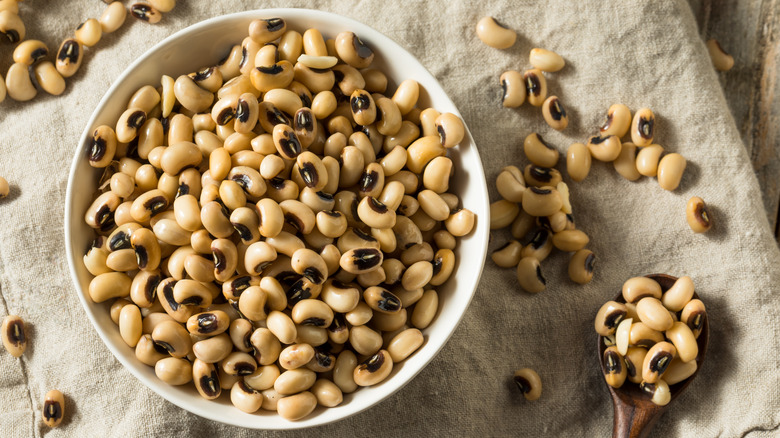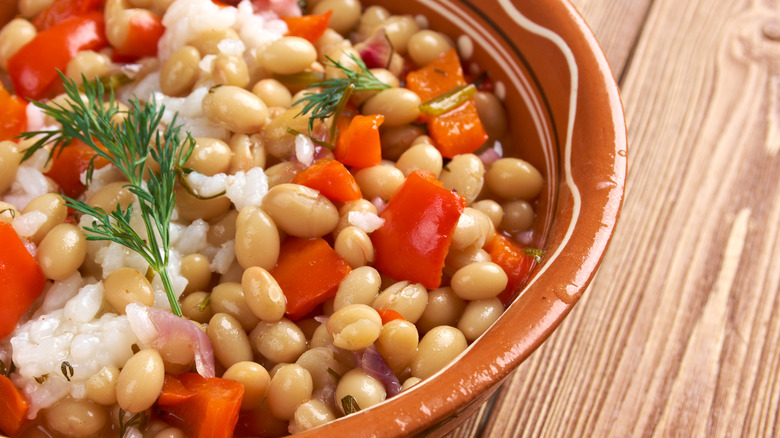Do You Really Need To Soak Black-Eyed Peas?
The black-eyed pea, unlike its cousin the green pea, is technically not a pea at all. A member of the legume family, black-eyed peas are pale with a distinctive black spot, called the eye. While there are similarities between the two, Is This That Food explains that they both come from a different genus and species.
Garden & Gun traces the Southern origin of black-eyed peas in America to the slave trade. The bean, native to North Africa, came to the U.S. via the West Indies and the triangle trade, when it was fed to the captives on slave ships. Before the Civil War, black eyed-peas were considered humble food to be consumed by the poor. Because of this, slaves grew the beans in their gardens, cooking them in stews, fritters and other recipes, turning the black-eyed pea into a staple of Southern cooking.
Believed to bring good fortune, ringing in the New Year with a plate of black-eyed peas is a Southern tradition. You can find Hoppin' John — black-eyed peas simmered in rice, smoky pork, and spices — on most New Year's Day menus. Modern Farmer credits the late 19th-century cookbook "A Carolina Housewife" with the first Hoppin' John recipe.
But if you plan to cook your own pot of Hoppin' John next New Year's, you might be wondering if you need to soak your dry black-eyed peas first. Is soaking dried beans like black-eyed peas really a necessary step?
What soaking does for beans like black-eyed peas
While black-eyed peas can be served fresh from the pod — Specialty Produce likens eating them to edamame — they are mainly found dried since they only grow in temperate climates. Most black-eyed pea cooking methods recommend soaking the dry beans overnight before cooking (via Southern Living).
So if you can't get your hands on the fresh stuff, do they really need a soak?
According to The New York Times, soaked beans cook faster and are easier to digest. Adding salt to the brine speeds up cooking even more, since the salt breaks down the bean's tough skin. Soaking beans like black-eyed peas can happen overnight or you can give them a quick soak, which entails bringing beans and water to a boil and then simmering for one hour.
The testers at Epicurious, however, call soaking black-eyed peas and other beans hogwash. After testing several methods — long soak, quick soak, salted or not — they determined beans don't need to be soaked at all. Beans that haven't been soaked might take longer to cook, but they apparently don't need all the extra fussing. While the brand does recommend a quick-soak method with salted beans for enhanced flavor, if you're running behind, you can just pop everything in the pot — and don't sweat the soak.

